 | |||
 | |||

|
Bob Dylan's Bringing It All Back Home (1965) The album cover, photographed by Daniel Kramer, with Dylan and Sally Grossman, the wife of his manager, Albert Grossman. The photo was taken in the Grossman house in Bearsville, New York, the town next to Woodstock, New York. Dylan had stayed extensively on the Grossman estate. Kramer has said of the concept: "I wanted it to feel like the universe was moving around him." 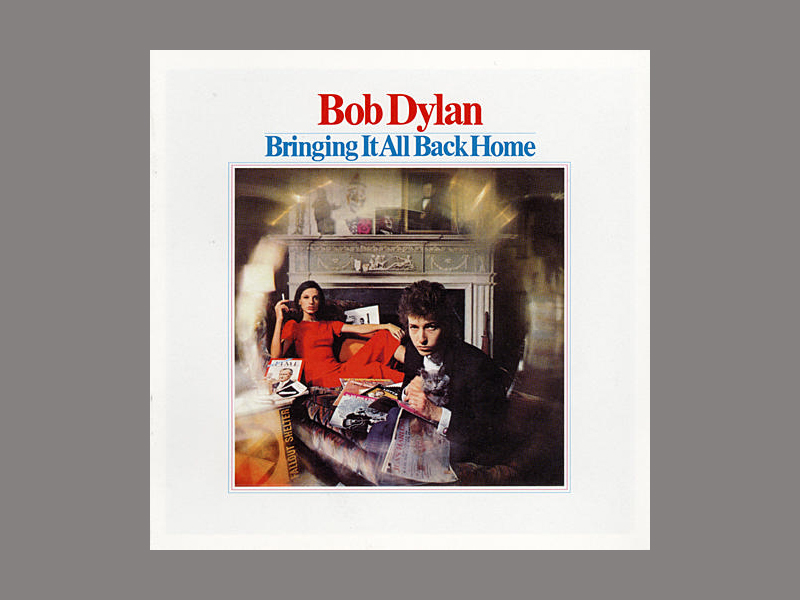
The original photo by Daniel Kramer. 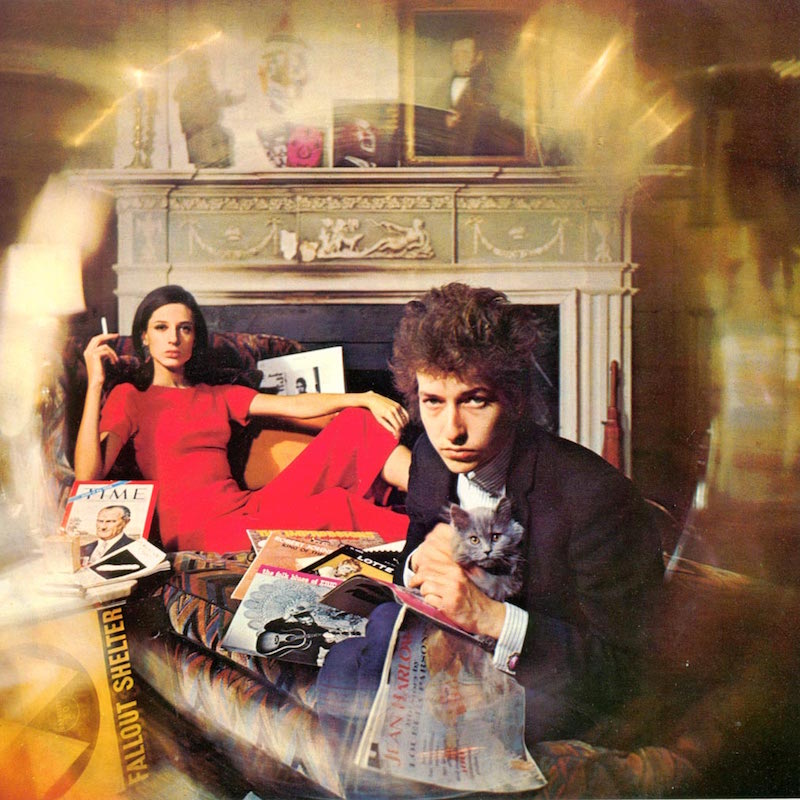
The actual location, with the actual couch, taken over 50 years later. 
(Photo above by Woodstock native Dylan McNamara ; art direction by Steve Keoster) Superimposed into a PopSpot. 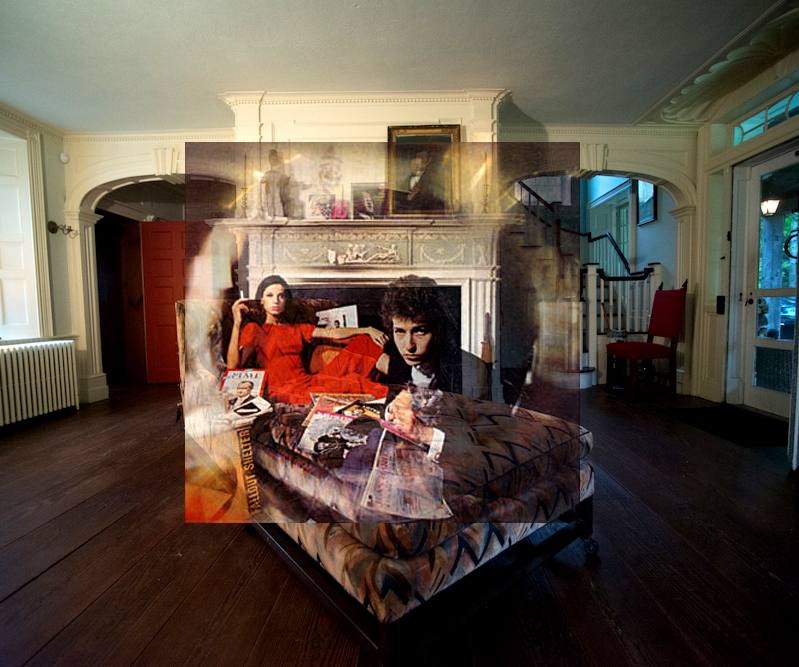
THIS ANIMATED GIF OF 14 PHOTOS, will take you from New York City to the Grossman Estate in Bearsville, next to Woodstock, New York, 50 years later . 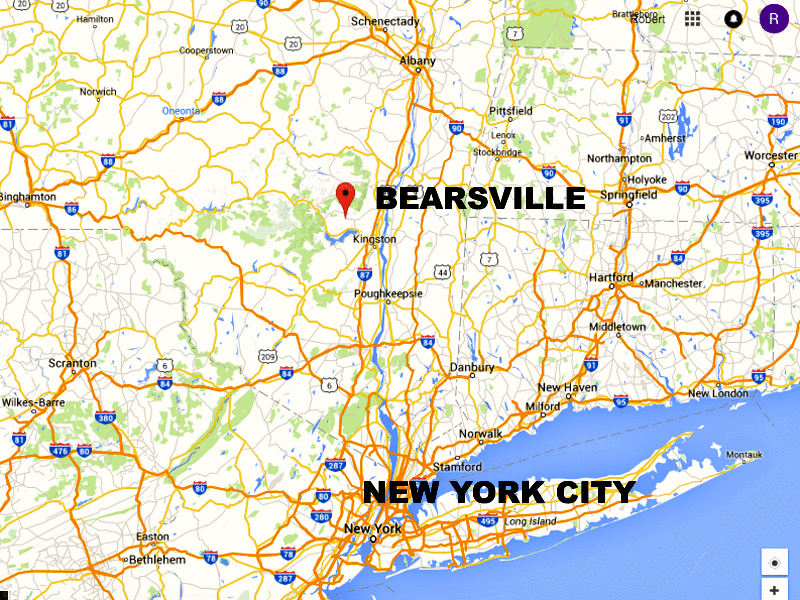
(GIF above made from video taken by Woodstock native Dylan McNamara ; art direction by Steve Keoster) This GIF gives will give you several more photos of the interior of the house. 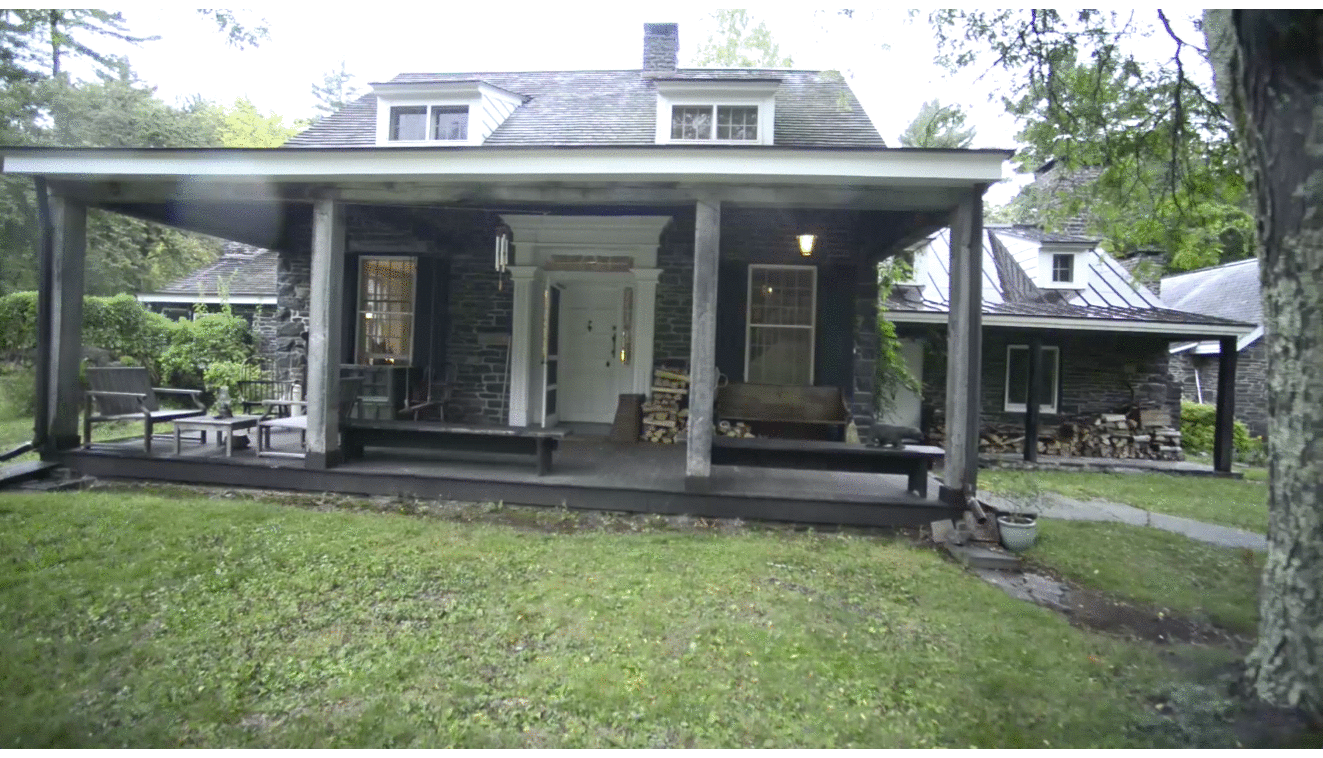
(GIF above made from video taken by Woodstock native Dylan McNamara ; art direction by Steve Keoster) The room in the final shot of the GIF above is where Dylan was photographed once watching Dean Martin on TV. (thanks Marie Fotini for this.) 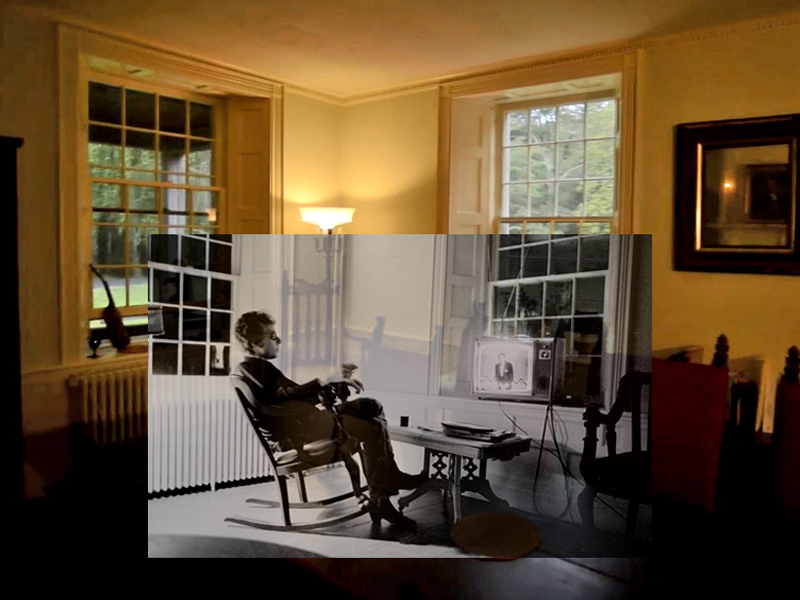
Here are some outtakes from the photo session. Outtake - 1 (This show more objects on the floor than the album cover shot and Dylan is not holding the cat.) 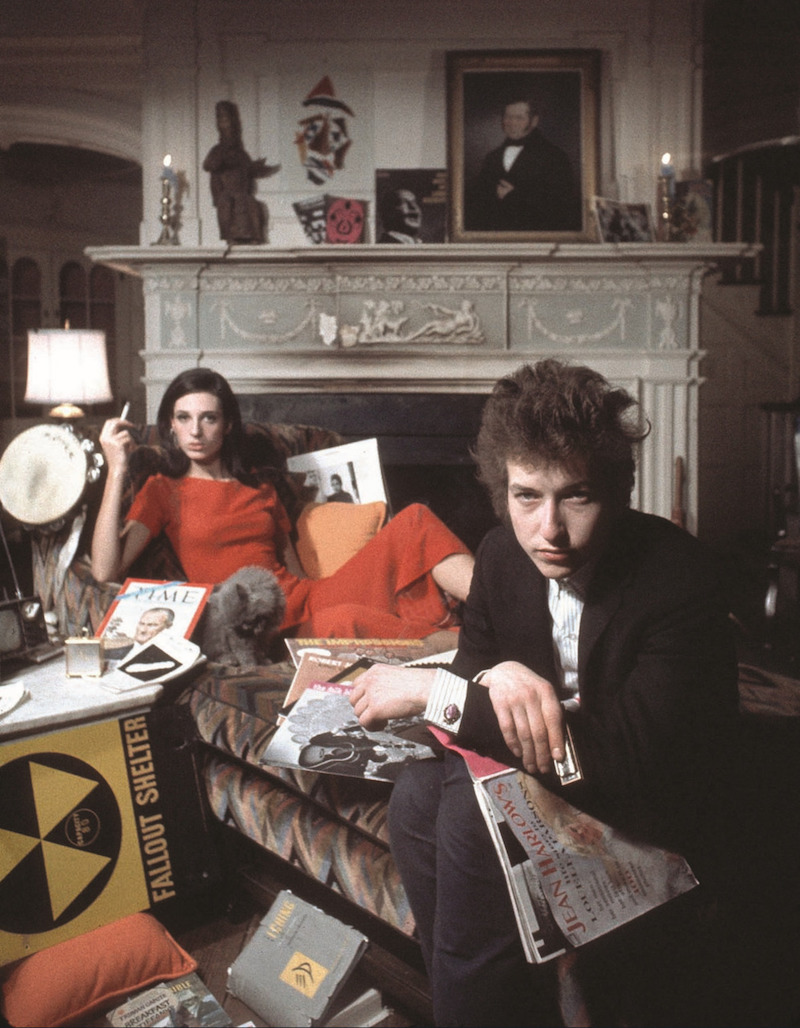
(photo by Daniel Kramer) Outtake - 2 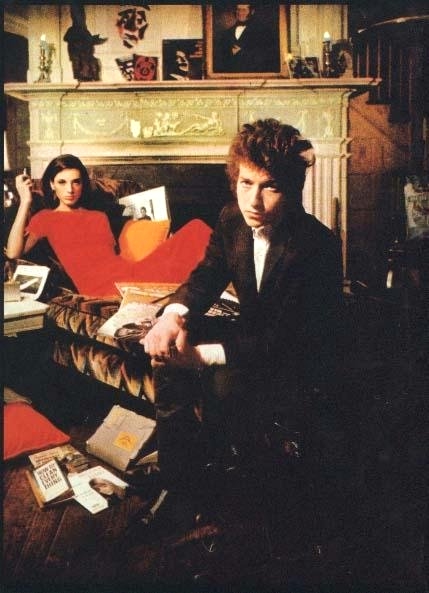
(photo by Daniel Kramer) Outtake - 3 (This was likely taken earlier - before they gathered all the foreground objects.) 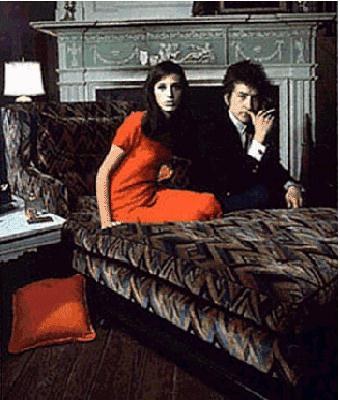
(photo by Daniel Kramer) Outtake - 4 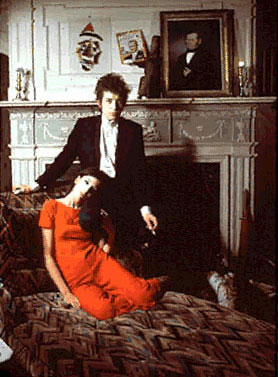
(photo by Daniel Kramer) Sally Grossman photographed in the same spot, years later. It looks like the same set of candlesticks on the far ends from the original shoot. 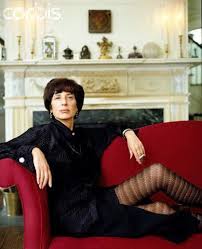
Photo by Deborah Feingold A SHORT BACKGROUND OF THE COVER SHOOT FOR : BRINGING IT ALL BACK HOME The cover of BRINGING IT ALL BACK HOME was a radical change for Dylan meant to signify his break with the Greenwich Village folk movement. No longer was Dylan photographed in the scruffy clothes of folksingers, but here he was a full-blown hipster country squire. . .with an oil painting on the mantle, a Persian cat on his lap, and a cool, sophisticated woman lounging in the background. The most significant thing of the album was that one side was acoustic songs and other side electric. A year and a half after the Beatles and Rolling Stones had captured the heats of American teenagers, Dylan was moving forward -- back to his teenage roots in rock and roll - but with the lyricism of an adult beat poet. For the cover, the photographer Daniel Kramer came up with the idea of photographing Dylan in a room full of objects that would signify his influences -- something that had been done in Renaissance portraiture - but with less cool stuff. There's a movie magazine, records by the blues singer Robert Johnson, the "beatnik" comedian Lord Buckley, the German singer Lotte Lenya (later a James Bond Villain), a R+B group called The Impressions and even Dylan's last album "Another Side of Bob Dylan". The woman relining on the sofa is Sally Grossman, the wife of Dylan's manager, Albert Grossman. On the mantle there is a poetry book by Borges (pronounced: Bor-hes) and above it a portrait of a clown that Dylan made by gluing colored glass on regular glass. There's a fallout shelter sign on the floor and a copy of Time Magazine featuring Lyndon Johnson as "Man of the Year" next to Sally's side. Dylan's cuff links were a gift from Joan Baez and she sang about them in the song about Dylan and her, "Diamonds and Rust." The photograph was taken at the Grossman's estate in near Woodstock, New York about 2 hours north of Manhattan. It was just outside their long driveway that Dylan would later have his famous motorcycle accident. Dylan, Kramer and Sally Grossman spent several hours gathering up all the objects around the house for the shoot. Kramer shot 10 exposures using a 4x5 camera. Of the final shot, Kramer says: "That's the only one the three main objects are looking at the camera: Dylan, Sally, and the Cat." Rumors have long swirled that the Persian cat was Dylan's and named Rolling Stone, but Dylan hadn't written that song yet. More likely the aristocratic looking cat was the Grossman's and named Lord Growing. One of the most unique things about the photo is the halo of yellow light in the front. Kramer said of the concept: "I wanted to feel like the universe was moving around him."To create the effect, Kramer darkened the room, except for the candle. Then he opened the shutter and spun the film holder on the back of the camera around in a circle. After that, he took the photo of Dylan and Sally on the same film using bright lights. The album cover was one of the most iconic of the 60's and has been emulated and parodied endlessly since. With this album, Dylan was certainly not working on Maggie's Farm any more. . . and to his fellow folksingers he was saying, "It's all over now, Baby Blue." This is Daniel Kramer's description of the photoshoot from his book Bob Dylan by Daniel Kramer. 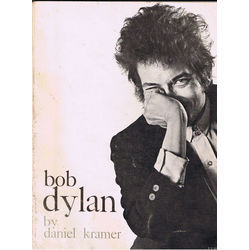

Here's how Kramer says how and why he created the circular yellow halo effect halo effect in the photo. (from p.223 of Dylan: Visions, Portraits, and Back Pages (2005, DK Publishing, NYC, USA, ) by the editors of Mojo Magazine.) 
Photographer Daniel Kramer: "We drove to Woodstock to Dylan's manager Albert Grossman's house. Sally Grossman (she's the lady in red on the cover) and Albert were there. I wanted to do something utterly different and break with tradition - not just for Dylan, but for album sleeve design in general. I wanted Dylan still and motionless in the midst of swirling chaos, to reflect how perceptive he was; as the world changed he could not only see it but understand it too. To the rest of us, it was just a blur." "I devised a technique to do this that created the circular turning effect around him by turning the film 360 degrees on a slow exposure. That shot blacked out Dylan and Sally, then there was a second exposure that kept him still while rotating of the camera created the blur around him. The point was for him to look elegant. He could be a businessman, a professional, an educated person, a leader, a captain of industry, a senator; any of these people. I felt that he was a special person and I wanted to convey that in this picture." " The photo was taken on a 4x5 camera rather than a 35 mm. There really was no smudging or putting Vaseline on the lens. You have to remember , great portraiture is really great furniture moving. We had to drag in all the lights, make the set and find the right clothes. I took a Polaroid of a mock-up and showed Bob, who liked it. Then we rearranged a few things in the photo. We spent an hour collecting objects around the house that looked good - the fallout shelter sign, a Robert Johnson album, Time magazine - and then we executed he photo. It was nominated for a Grammy, which pleased me very much." In an online interview with Kramer at STARTRIBUNECOMPANY.COM Kramer said: "I made 10 exposures. That (cover shot) was the only time all three objects* were looking at the lens." (* the objects being: Dylan, Sally Grossman (wife of manager Albert) and a cat. The photographer, Daniel Kramer, with Joan Baez and Bob Dylan in 1964. 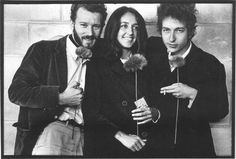
(photo by Daniel Kramer) This is an example of a 4 X 5 camera, the size camera that was used to take the shot. Kramer said he did some test shots by inserting Poloroid film first - which Dylan approved. In an interview I had with Daniel Kramer, I asked him if had practiced the technique of spinning the negative box for the halo effect before the photo shoot in Bearsville. He said he had practiced it in his studio. That's why he was confident it would work when he got to Bearsville. He also said that he intended the shot to fit the whole cover as a full bleed, but the cover was later designed with the white border and text around the photo. 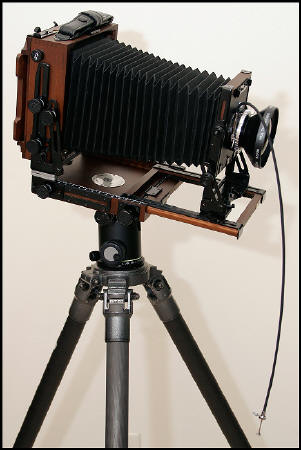
Some writers have suggested that, in placing objects in the shot, Kramer was trying to emulate Flemish Painting, like this Van Eyck painting, which contains many household objects meant to convey attributes of fidelity, love, etc. But Kramer told me he was not trying reference any earlier paintings with his setup for the shot. 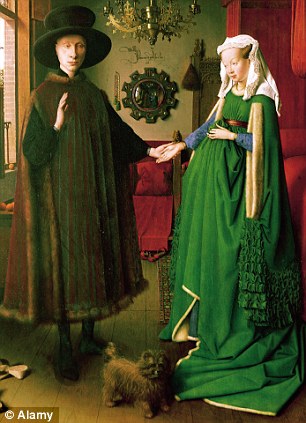
Here's an outtake of the cover shot again, with all the objects in clear focus. Following the photo is a list of all the objects. You may want to refer back to this photo. 
(photo by Daniel Kramer) The following is a list of people and objects in the "Bringing It All Back Home" cover photo. The information comes partly from Wikipedia, Robert Shelton's No Direction Home, and the website www.biabhcoverposers.yolasite.com which goes into depth many of the objects here. BOB DYLAN AND SALLY GROSSMAN • Sally Grossman holding a cigarette. On her right is the album: Another Side of Bob Dylan. On her left (obscured) is a tambourine.• Bob Dylan holding the Grossman's small kitten, supposedly named Lord Growing. He's wearing lavender cufflinks given to him by Joan Baez.** On his knee is a magazine. We see on the back page an advertisement for Jean Harlow - life story by Louella Parsons. (**She referenced them in her song "Diamonds and Rust" - "Ten years ago I bought you some cufflinks.") ON THE MANTLE (left to right) • possibly a sculpture from India made of wood• on the wall - a collage of a clown ("The Clown") by Dylan. (About to be discarded colored cut glass glued on clear glass. Given by Dylan to Bernard Paturel who ran Bernard's Cafe in Woodstock, and borrowed for the shoot. • a copy of GNAOUA - a book of exorcism and beat poetry edited by Ira Cohen published in Tangier 1964. • a copy of LABYRINTHS: Selected Stories & Other Writings - by Jorge Luis Borges. • a record by (comedian) Lord Buckley (The Best of Lord Buckley) • a 19th Century portrait that came (to the Grossmans) with the house from the original owners. • a black and white photograph • another black and white photograph ON THE COUCH • the record: The Folk Blues of Erich Von Schmidt (Dylan later uses a similar pose on the Nashville Skyline cover. (He met "Rick Von Schmidt in the "green pastures of Harvard University")• the record: Lotte Lenya sings Berlin Theater songs by Kurt Weill. • the record: Robert Johnson - King of the Delta Blues • the record Ravi Shankar - India's Master Musician (largely hidden - a white cover with black starburst) • the record: The Impressions - Keep on Pushing ON THE SIDE TABLE • a copy of "Time" Magazine featuring Lyndon Johnson as "Man of the Year. (Jan 1, 1965 issue)• a yellow fallout shelter sign ("capacity 80") • a clock (obscured) • a portable mini-tv (obscured) • a harmonica (obscured) • a black-and-white pamphlet: LIFE WAS NOT ALWAYS A TRAGEDY ON THE FLOOR (some are seen only in outtakes) • a book: The I Ching or Book of Changes edited by Hellmut Wilhelm, Translated by Cary F. Baynes• a paperback book: Truman Capote's Breakfast at Tiffany's" • a paperback book: How to Clean Everything - by Alma Chesnut Moore (1964) • a book: Perhaps THE INVISIBLE MAN • a 7-inch EP record of of Francoise Hardy's first record (1962) "J'Suis D'accord" SOME OF THE OBJECTS • "On his knee is a magazine. We see on the back page an advertisement for Jean Harlow - life story by Louella Parsons." 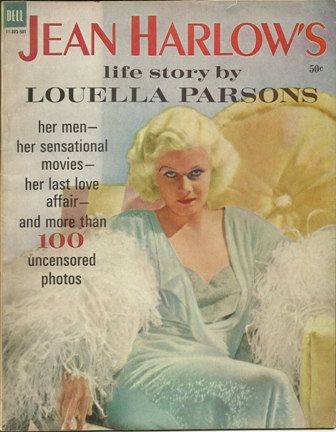
• The record: The Folk Blues of Erich Von Schmidt (Dylan later uses a similar pose on the Nashville Skyline cover. (He met "Rick Von Schmidt in the "green pastures of Harvard University") • The record: Lotte Lenya sings Berlin Theater songs by Kurt Weill. • The record Ravi Shankar - India's Master Musician (largely hidden - a white cover with black starburst) 
• The record: Robert Johnson - King of the Delta Blues • The record: The Impressions - Keep on Pushing • Bob's last album: Another Side of Bob Dylan.
• A record by (comedian) Lord Buckley (The Best of Lord Buckley) • A copy of GNAOUA - a book of exorcism and beat poetry edited by Ira Cohen published in Tangier 1964. 
• A copy of LABYRINTHS: Selected Stories & Other Writings - by Jorge Luis Borges. • On the wall - a collage of a clown ("The Clown") by Dylan. (About to be discarded colored cut glass glued on clear glass. Given by Dylan to Bernard Paturel who ran Bernard's Cafe in Woodstock, and borrowed for the shoot. • A 19th Century portrait that came (to the Grossmans) with the house from the original owners. • A copy of "Time" Magazine featuring Lyndon Johnson as "Man of the Year. (Jan 1, 1965 issue) • A black-and-white pamphlet: LIFE WAS NOT ALWAYS A TRAGEDY • A yellow fallout shelter sign ("capacity 80") • A book: The I Ching or Book of Changes edited by Hellmut Wilhelm, Translated by Cary F. Baynes 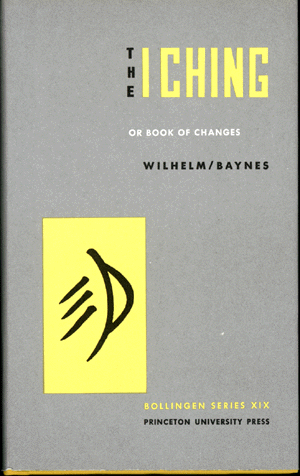
• A 7-inch EP record of of Francoise Hardy's first record (1962) "J'Suis D'accord" • A paperback book: How to Clean Everything - by Alma Chesnut Moore (1964) • The Grossman's Persian cat, supposedly name Lord Growing. 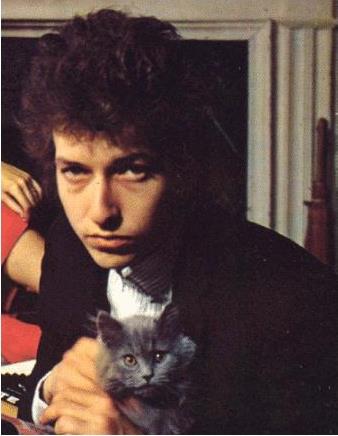
• This photo of Sally Grossman, Dylan, and the future Sara Dylan shows Sally holding cat food, probably for Lord Growing. 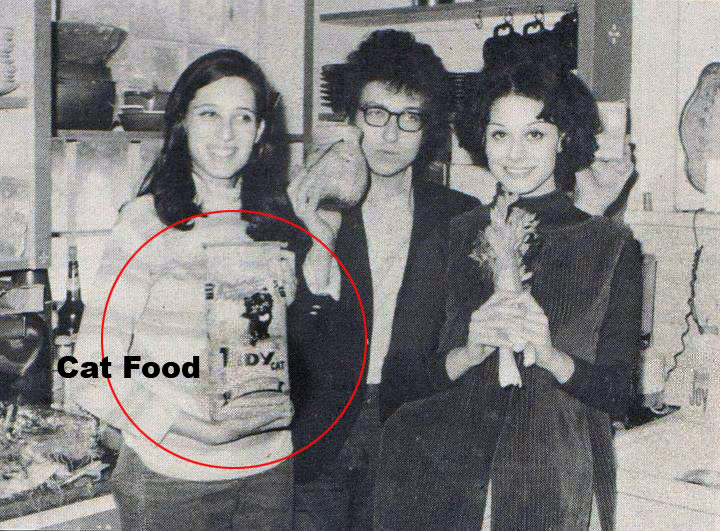
• Pink cufflinks given to Dylan by Joan Baez. 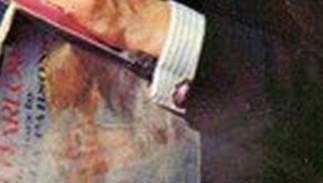
• A paperback book: Truman Capote's Breakfast at Tiffany's" 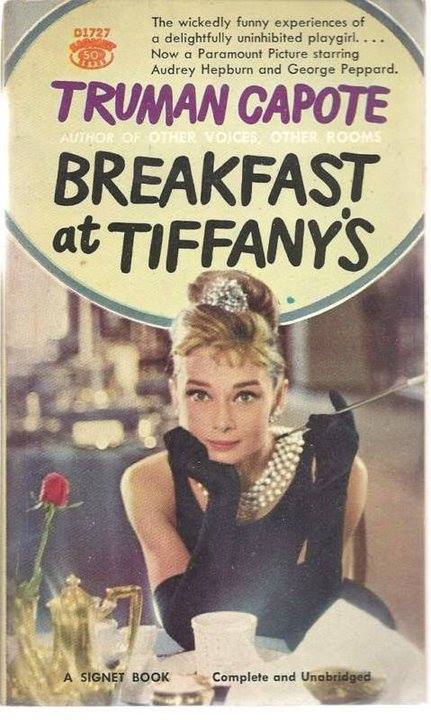
A tribute to the iconic cover. 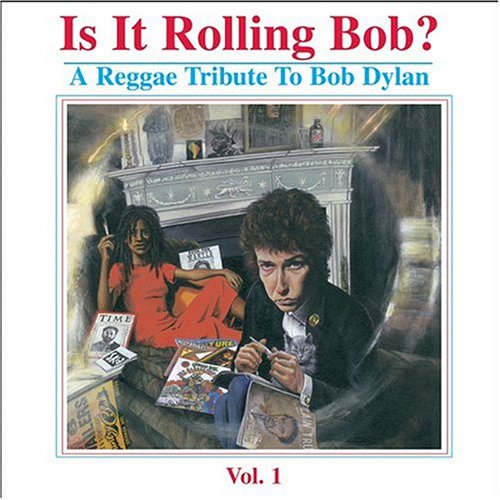
The back cover of Bringing It All Back Home - US Version Clockwise from the Top: (all photos by Daniel Kramer) 1) Bob and Joan Baez. (Joan is pretending to play harmonica without a harmonica holder.)(The photo is possibly taken at the Convention Center, Philadelphia, March 5, 1965.)2) Peter Yarrow speaking to police. From a "candid" photoshoot on 5th Avenue. 3) Allen Ginsberg backstage at a Dylan concert at the McCarter Theater in Princeton, New Jersey, in September 1964. 4) Dylan recording the Bringing It All Back Home album. 5) Filmmaker Barbara Rubin, friend of Ginsberg, (who introduced Dylan to the Warhol factory crowd) massaging Bob's head at the McCarter Theater, Princeton NJ concert. 6) Dylan leaving a concert in Philadelphia at Town Hall on October 25th, 1964. (Race and Broad Street) 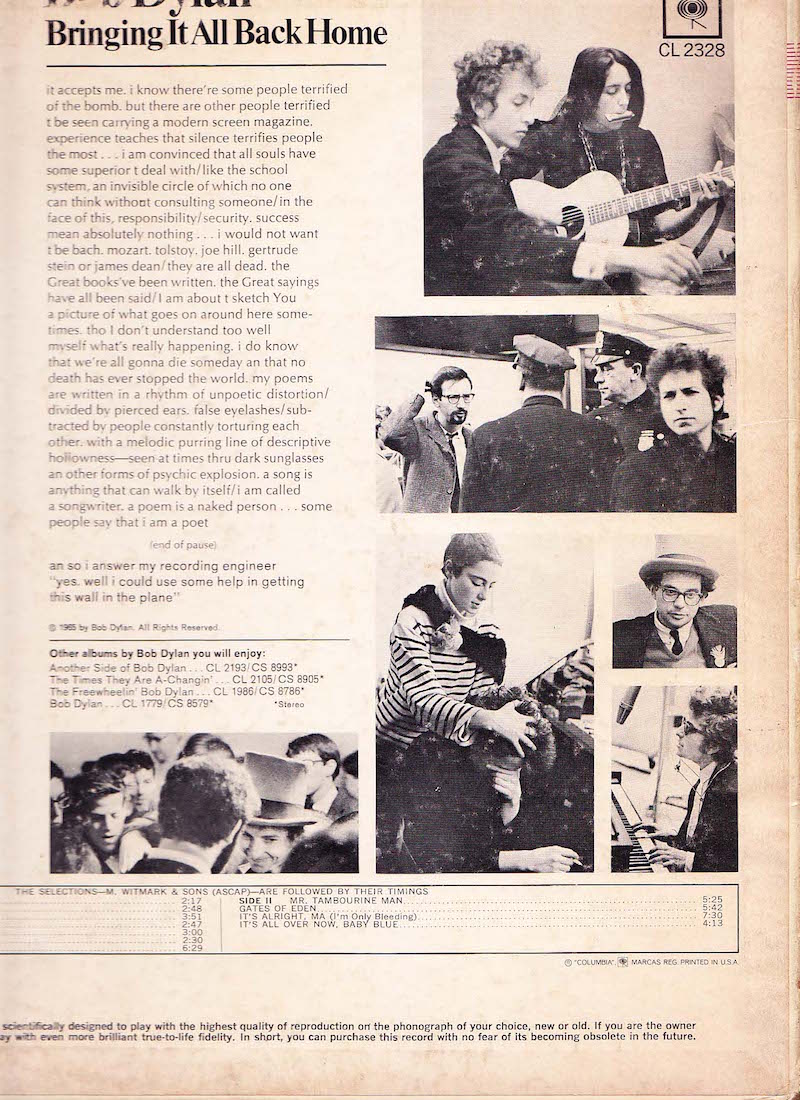
Possibly the back cover of the U.K. edition. 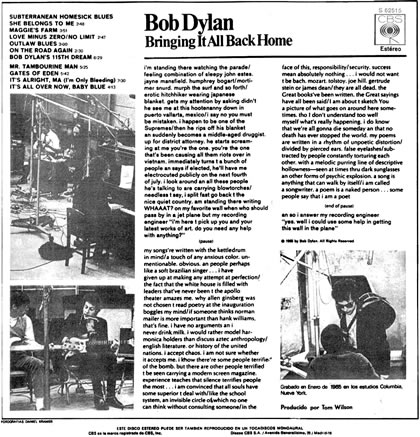
OTHER OUTTAKES OF THE BACK COVER PHOTOS by Daniel Kramer Daniel Kramer from Bob Dylan by Daniel Kramer: "Eventually, photography became something that Dylan enjoyed. One day he called and asked me if I wanted to take some pictures. Fifteen minutes later he arrived at my studio with his friends, Peter Yarrow, of Peter, Paul, & Mary, and John Hammond, Jr., the folksinger, and suggested we go out to the street and have some fun." Some of those photos follow, here: This photo was taken the same day as the photo of Peter Yarrow and the policeman on album's back cover. The photo was taken in front of Lord and Taylor, at 39th and Fifth Avenue, 1/2 block from Kramer's studio which was on 25 West 39th Street between 5th and 6th Avenues. 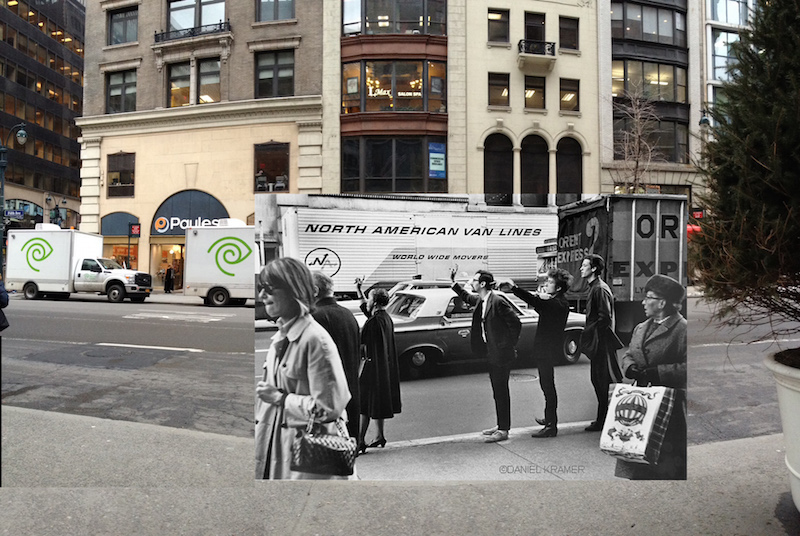
(interior photo by Daniel Kramer) 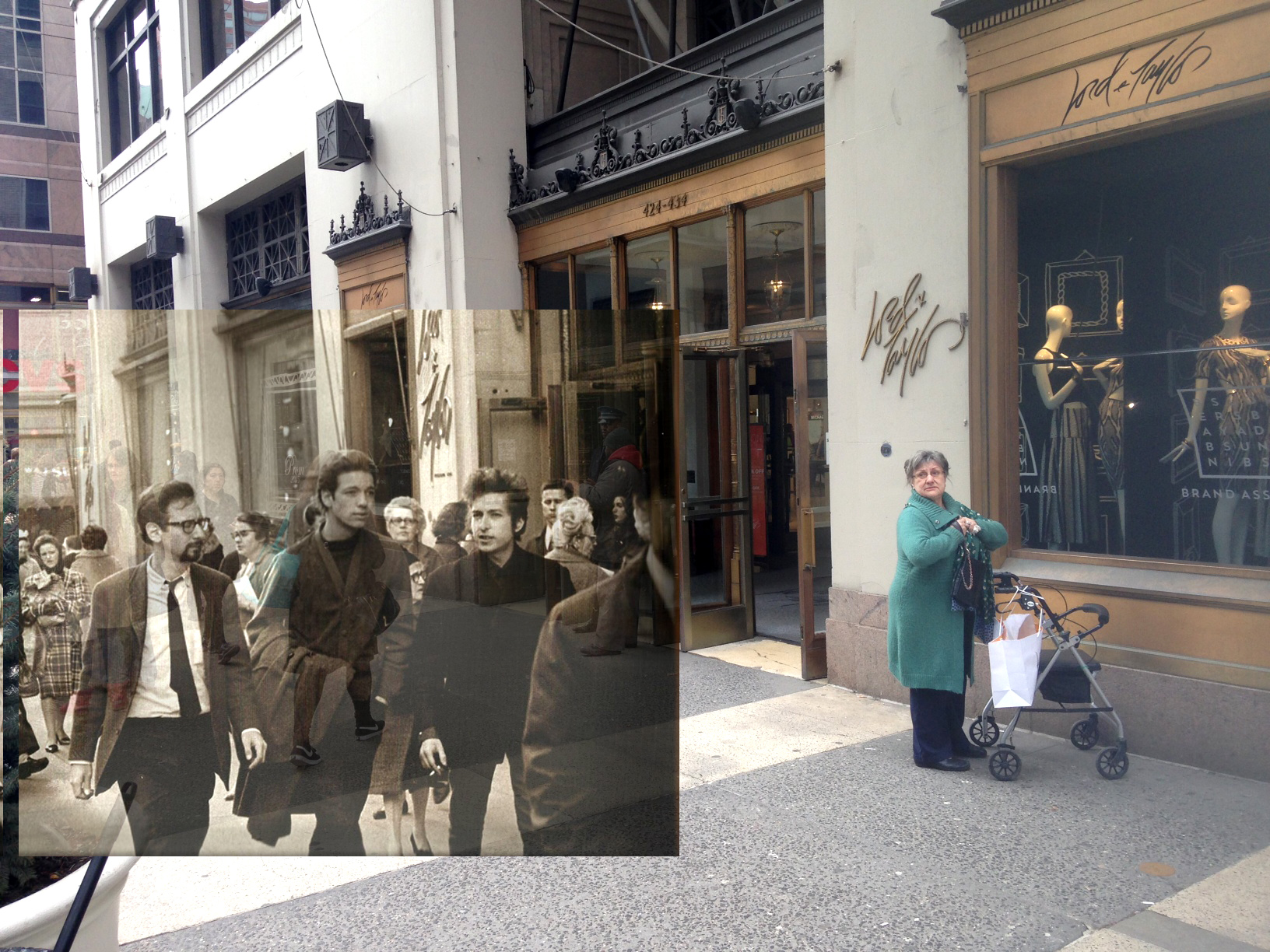
(interior photo by Daniel Kramer) From the back cover. 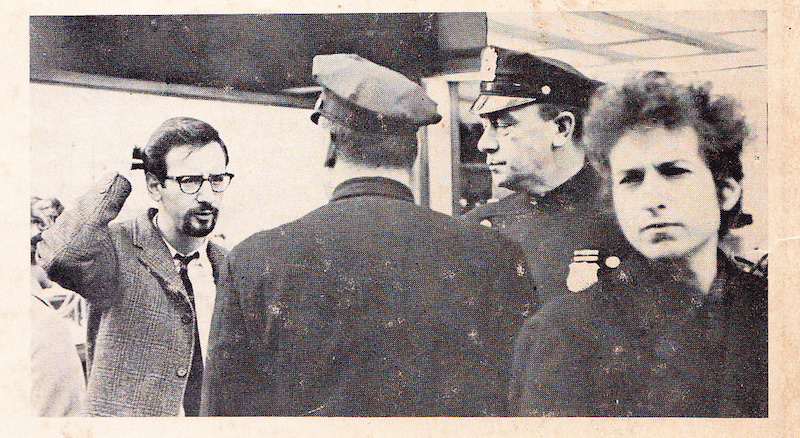
(photo by Daniel Kramer) The address of Daniel Kramer's studio: 25 West 39th Street between 5th and 6th, northside. The address is a block from Lord & Taylor. 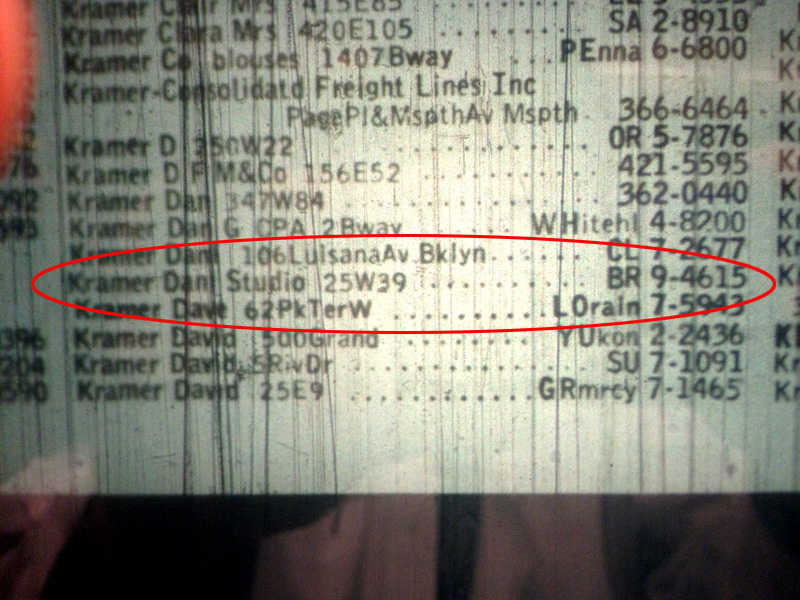
Dylan in Town Hall, Philadelphia. 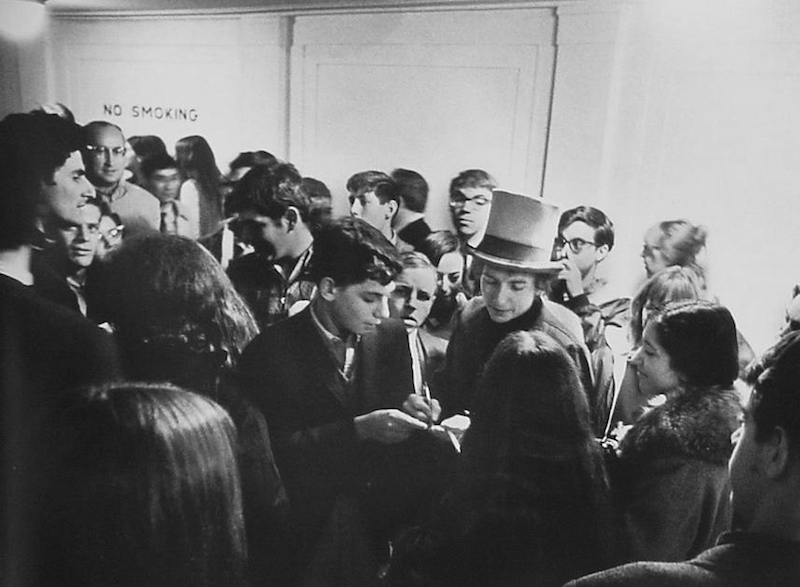
(photo by Daniel Kramer) Dylan in Princeton, New Jersey with Allen Ginsberg, Peter Orlovsky, Barbara Rubin, and taking the photo, Daniel Kramer. 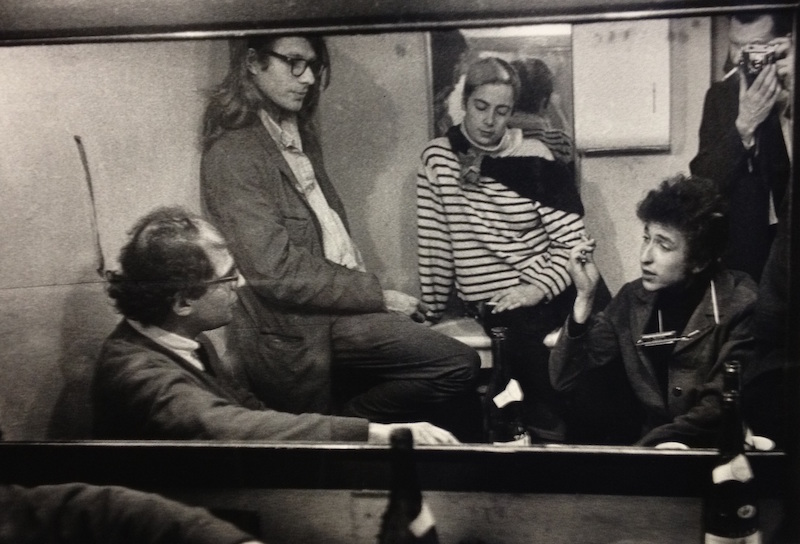
(photo by Daniel Kramer) Avant-garde filmmaker Barbara Rubin gives Dylan a head massage at Princeton, New Jersey. 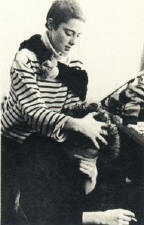
(photo by Daniel Kramer) Dylan enjoying Barbara Rubin's head massage at Princeton. 
(photo by Daniel Kramer) Dylan with Joan Baez. A wider shot. The photo is possibly taken at the Convention Center, Philadelphia, March 5, 1965. 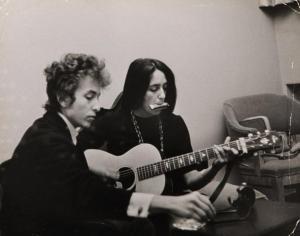
(photo by Daniel Kramer) A similar shot to the one on the bottom right of the album from the recording session for Bringing It All Back Home. 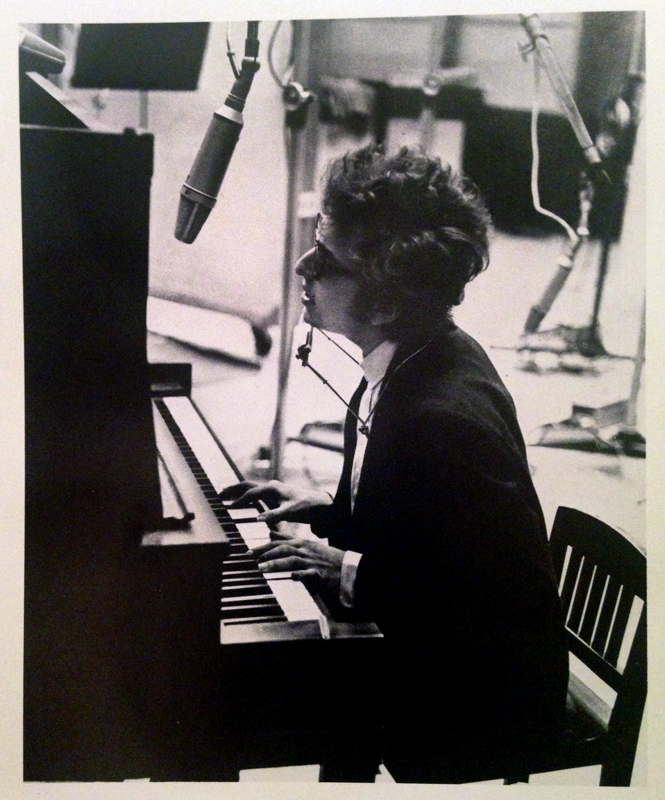
(photo by Daniel Kramer) PHOTO SESSION FOR TARANTULA based on the BRINGING IT ALL BACK HOME cover. From Bob Dylan by Daniel Kramer (1967, Citadel Books) "Bob wanted to make a picture for the cover of his book Tarantula, and again suggested we work in Woodstock. This time we used as a background an old shack. Trying to capitalize on the success of the album cover (from Bringing It All Back Home), we arranged props around Bob, most of them found in the shack. Unfortunately, we capitalized too well. The picture was so similar to "Bringing It All Back Home" that we decided not to use it. Bob wanted Sarah Lownds with him in this picture. Sarah, a dark-haired attractive, soft-spokeswoman, later became Mrs. Dylan." In a conversation I had with Daniel Kramer, he told me that this was a storage shack was on Peter Yarrow's mother's property in Woodstock. He added that the objects came from inside the shack and were mostly books and magazines and family memorabilia from the Yarrow family, including the picture of the man in center left. 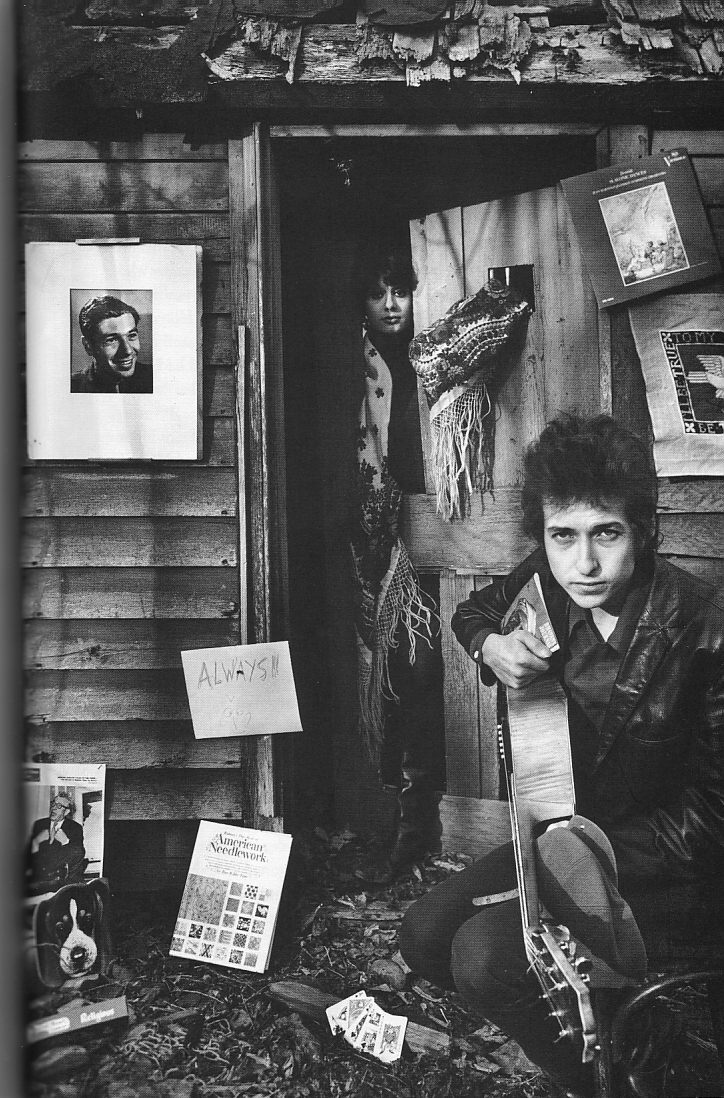
(photo by Daniel Kramer) 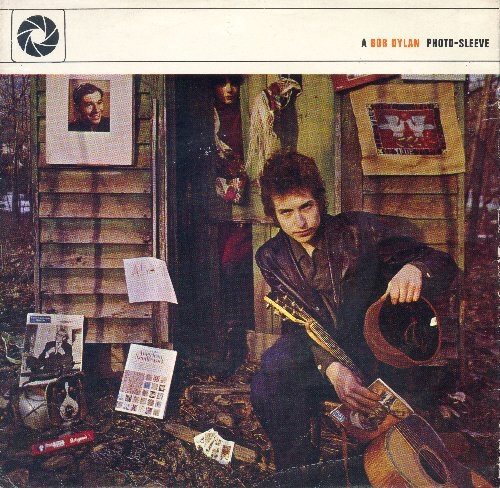
(photo by Daniel Kramer) 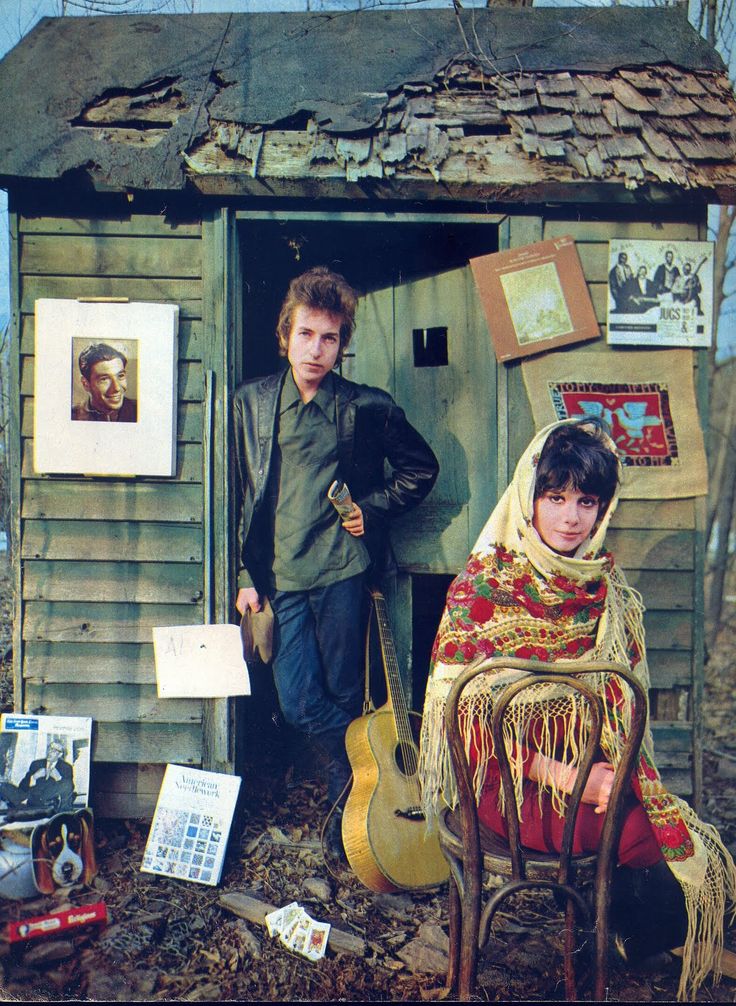
(photo by Daniel Kramer) These are most of the objects in the photo, as compiled by dreamtimepodcast.com . - Playing Cards: Aces of Spades, Facedown card, Queen of Spades, Jack of Spades, Joker. - Women's Day Book of American Needlework by Rose Wilder Lane (1963). 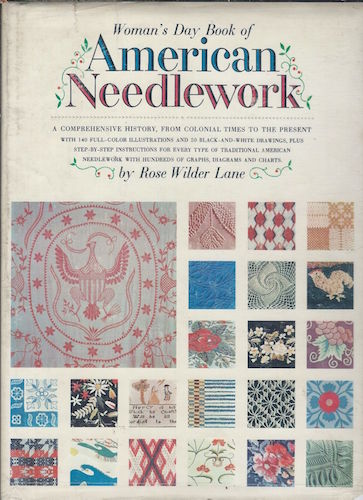
- A box with the word "Religious" on the upper right hand side. - A cardboard cutout of a beagle dog. - The Sunday March 14th 1965 edition of the New York Times Magazine. Senator Edward Dirksen of Illinois is on the cover. 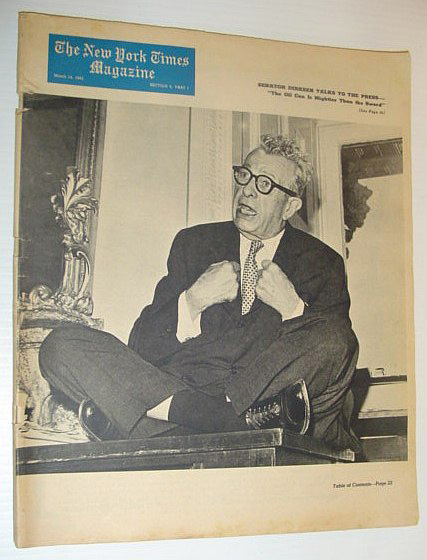
- A piece of paper with the word ALWAYS!!! on it. - A record cover: DVORAK: Slavonic Dances. Jean Martinon conducting the London Symphony Orchestra. An RCA Victor steroeo album (VICS 1054). 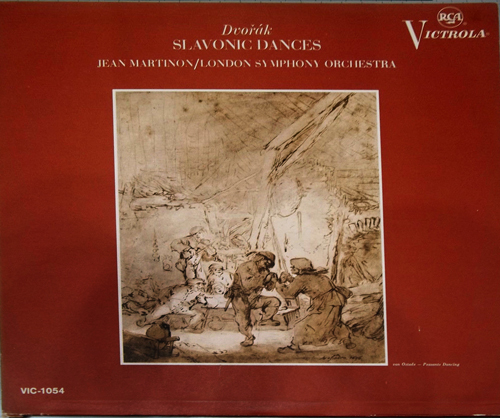
- A 1962 album called THE GREAT JUG BANDS on the OJL label. 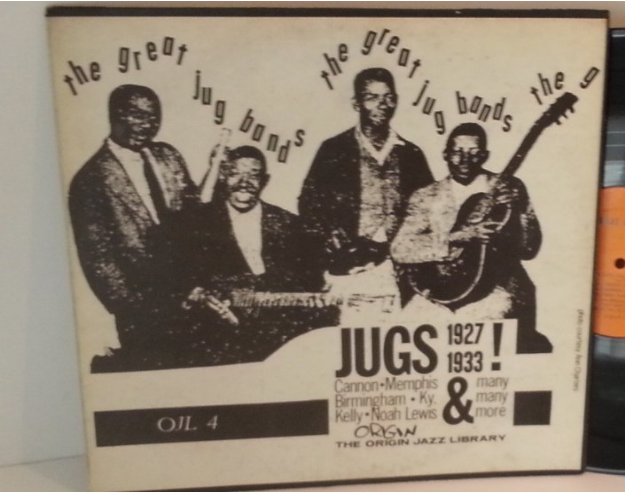
- A needlepoint reading "Be True to Me. Let ME BE True to Myself." - In Dylan's right hand: an issue of an Indian magazine calledBhavan's Journal. from 1965. (This is a picture of an issue of the Journal from 1973, not 1965, just so you can see what it was like.) In his left hand, Dylan holds a "sailor's cap". - The man in the portrait to the right of Dylan is probably one of Peter Yarrow's relatives. 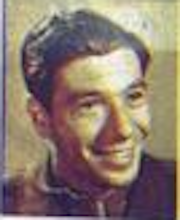
THE END ADDENDUM TO THE BRINGING IT ALL BACK HOME ENTRY. ADDENDUM #1 - PopSpots was asked by Sony's Legacy Recordings division to participate in a short video that explained the history of the Bringing It All Back Home photoshoot to accompany the release of three Dylan box sets called The Bootleg Series: Bob Dylan 1965-1966: The Cutting Edge. The sets include various studio outtakes of Dylan's albums of 1965-1966, including, Bringing It All Back Home, Highway 61 Revisited, and Blonde on Blonde. To see the video for Bringing It All Back Home (screenshot below), click here. 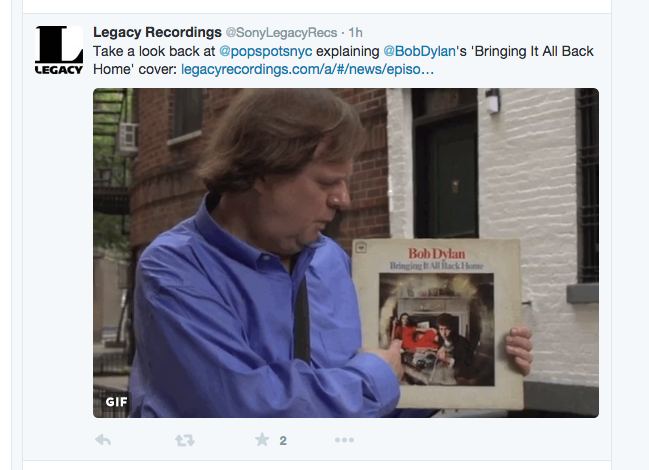
For a link to all three three videos (Bringing It All Back Home, Highway 61 Revisited, and Blonde on Blonde) click here. 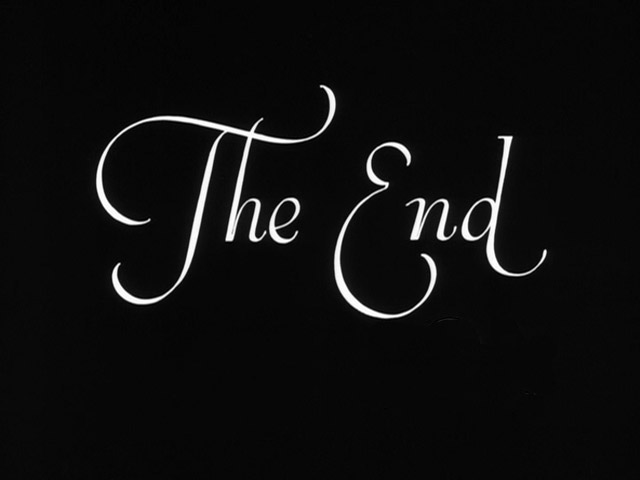
|
||
